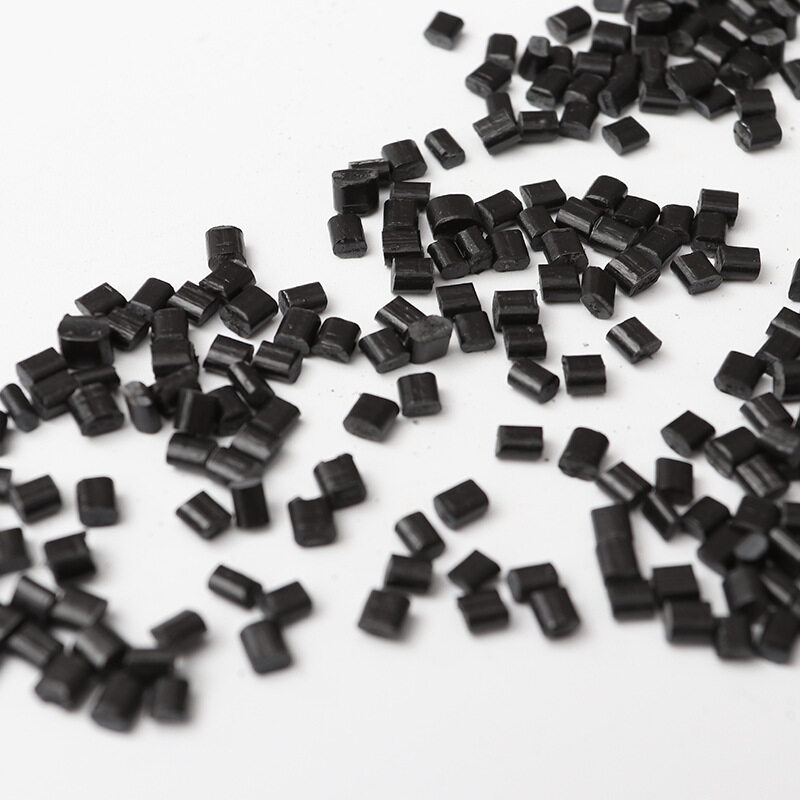Erreur de format d'e-mail
emailCannotEmpty
emailDoesExist
pwdLetterLimtTip
inconsistentPwd
pwdLetterLimtTip
inconsistentPwd

Offer Technical Support and Customized Solutions
The company is committed to creating new and improved plastic materials to meet the evolving demands of the market.

Exploring the Versatility of HIPS Pellets: Customization and Applications
HIPS, short for High Impact Polystyrene, was developed in the 1950s as a modified form of polystyrene (PS) to address its inherent brittleness. By incorporating rubber into the polystyrene base material, various grades of high impact polystyrene with different properties can be produced. In recent years, a wide range of special grades of HIPS has been developed, including flame retardant grades, stress crack resistant grades, high gloss grades, extremely high impact strength grades, glass fiber reinforced grades, and low residual volatile grades, among others. These grades are increasingly competing with expensive engineering resins in many application areas. As a HIPS material Supplier, we can provide HIPS pellets White label and HIPS pellets customized service.
One of the standout characteristics of High Impact Polystyrene is its ease of processing, excellent dimensional stability, high impact strength, and good rigidity. However, HIPS has limitations in terms of heat resistance, oxygen permeability, UV stability, and resistance to oil. The performance of HIPS is greatly influenced by the content of rubber within the system.
Physicochemical Properties:
HIPS is developed based on PS, which boasts good transparency, high hardness, and ease of molding. However, PS is prone to brittle fracture, limiting its usability. To improve its performance and mitigate brittle fracture, styrene-butadiene rubber is added during polymerization to enhance its toughness. The impact toughness of HIPS after modification is four times higher than that of PS.
Depending on the amount of rubber added, HIPS can be classified into low-impact PS, medium-impact PS, and high-impact PS. However, the addition of rubber reduces the surface gloss of the material. Modification increases the material's usage temperature, with a heat deformation temperature of 96°C. Like PS, HIPS is also a flammable plastic with a limiting oxygen index of 17.8. When burned, the flame of HIPS is orange-yellow and produces a large amount of black smoke. Its burning characteristics include softening, foaming, and charring, accompanied by the distinctive odor of styrene monomers.
HIPS can be processed using various traditional molding methods, such as injection molding, structural foam molding, sheet and film extrusion, thermoforming, and blow molding. HIPS resin absorbs moisture slowly, so drying is generally not required under normal circumstances. However, excessive moisture on the surface of the material may be absorbed, affecting the appearance quality of the final product. Drying at 75°C for 2-3 hours can remove excess moisture.
Extrusion molding of films, sheets, and profiles is the most common processing method for HIPS. High impact polystyrene has a wide processing range, making it one of the easiest resins to thermoform. Ordinary extrusion equipment can be used, with a resin melting temperature of 205-255°C.
HIPS exhibits excellent thermal stability and shear stability, allowing for the use of a large amount of recycled material without compromising product performance. The amount of recycled material used in thermoforming processing can be as high as 60%.
Injection molding is the second most common processing method after extrusion. The processing temperature is 200-260°C, but for flame-retardant grades of HIPS, the processing temperature must be kept below 240°C to prevent degradation reactions. The melt index of resins processed by injection molding is generally 5.0-15.0 g/min.
Applications:
HIPS's primary application is as packaging and disposable materials, particularly food packaging materials and dining utensils. Major applications include daily packaging containers, cups for vending machines and packaging, various covers, trays, bowls, etc. Disposable items such as plates, bottle caps, safety razors, and pen barrels are also significant consumers of HIPS.
In recent years, specialty products have become a focus of HIPS product development. Newly developed HIPS products can compete with engineering resins in some application areas, offering much higher quality than existing products. Instruments, appliances, and consumer electronics are among the growing markets for HIPS products, including small instruments, refrigerator interior walls and components, TV housings, air conditioning components, commercial machines, and audio and video cassette cases. Special grades of HIPS resin have replaced expensive engineering plastics in many fields, with ultra-high impact resistance and heat resistance, making them suitable for automotive interior components.

